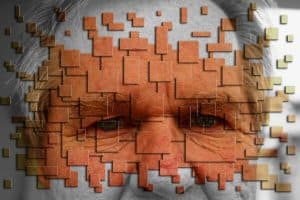Meibomian gland dysfunction (MGD) is one of the leading causes of dry eye syndrome and blepharitis.
Recent studies show up that to 59 percent of all adults show at least one symptom of MGD.
What is meibomian gland dysfunction?
The meibomian glands are the tiny pores that line the upper and lower eyelid margins. These glands produce the oil (meibum) that contributes to your eye’s tear film and provides constant lubrication to keep your eye healthy.
Meibum is an essential part of your eye’s tear film as it prevents your tears from evaporating too quickly.
Meibomian gland dysfunction occurs when the oil glands become blocked or clogged with thick secretions, preventing a normal flow of oil.
As a result, the quality of the oil that flows through these glands may be poor and lead to eye irritation and a crusty discharge.
Meibomian gland dysfunction often does not present with any symptoms in its early stages. However, if the condition progresses without treatment, it can cause eyelid inflammation (blepharitis) and dry eye symptoms.
When MGD becomes a chronic problem, normal oil secretion becomes impossible— which can lead to permanent damage in the tear film, as well as dry eye syndrome.
Common symptoms of MGD
- Dry eyes
- Burning sensation in or around the eyes
- Itchy eyes
- Red eyes
- Crusty discharge in the corner of the eyes
- Watery eyes
- Blurred vision
- Light sensitivity
- Chalazia/styes
- Foreign body sensation in the eyes
If you experience any of these symptoms contact an eye doctor near you.
SEE RELATED: Do I Have Blepharitis?
How is MGD treated?
Meibomian gland dysfunction can be treated with a variety of medications and in-office procedures. Depending on the severity of your symptoms, your eye doctor may recommend a combination of treatments to ensure optimal results.
Restasis prescription eye drops are prescribed for severe dry eye symptoms. These medicated eye drops help to increase oil production and tear quantity.
Steroid eye drops are generally prescribed in combination with medicated eye drops. These drops reduce eyelid inflammation to improve the flow of oils into the eyes.
LipiFlow is a medical device that opens the meibomian glands and improves oil production by using a combination of heat and gentle eyelid massage.
TearCare is a procedure in which heating patches are applied to the external eyelids and connected to a handheld heating device. This device melts the waxy build up of secretions in order to unclog the meibomian glands and improve oil flow.
iLUX is a portable, hand-held, LED-based heating device used to warm the inner and outer surfaces of the eyelids. The iLUX works by melting the build up of waxy secretions blocking the meibomian glands to improve oil flow.
Intense pulsed light (IPL) uses specific wavelengths of light to interact with the blood vessels on the face adjacent to the eyes and eyelids. This process reduces eyelid inflammation and bacterial overgrowth that may be causing your MGD. Several treatments over a period of a few months are generally required to see optimal results.
Blephex involves a hand-held device that gently exfoliates the eyelid margins to eliminate bacterial debris and open the meibomian glands. When the inflammation is treated, your overall eyelid health can improve.
Lid debridement may be performed to clean the debris and keratin from your eyelid margins and unclog the meibomian glands. This is performed by your eye doctor using a specialized hand-held device.
Blephasteam is an eyelid-warming medical device that resembles a pair of swimming goggles. This device helps to relieve symptoms of MGD by unblocking the meibomian glands. Blephasteam is electronically controlled in order to maintain a constant and effective temperature throughout the treatment procedure.
While MGD can cause significant discomfort and dry eyes, it can be effectively treated, especially if detected early.
LEARN MORE: Guide to Eye Conditions
Schedule an appointment with your optometrist to determine which MGD treatment can alleviate your symptoms and help your eyes to feel more comfortable.


